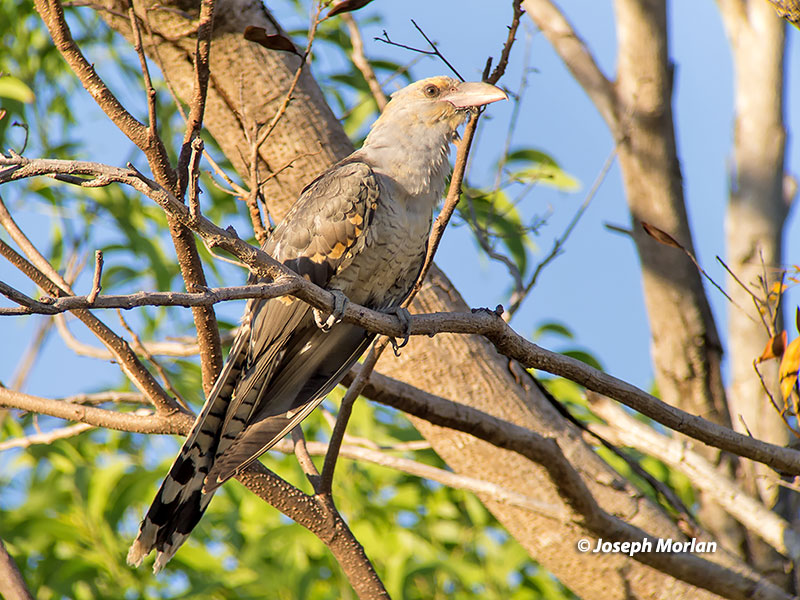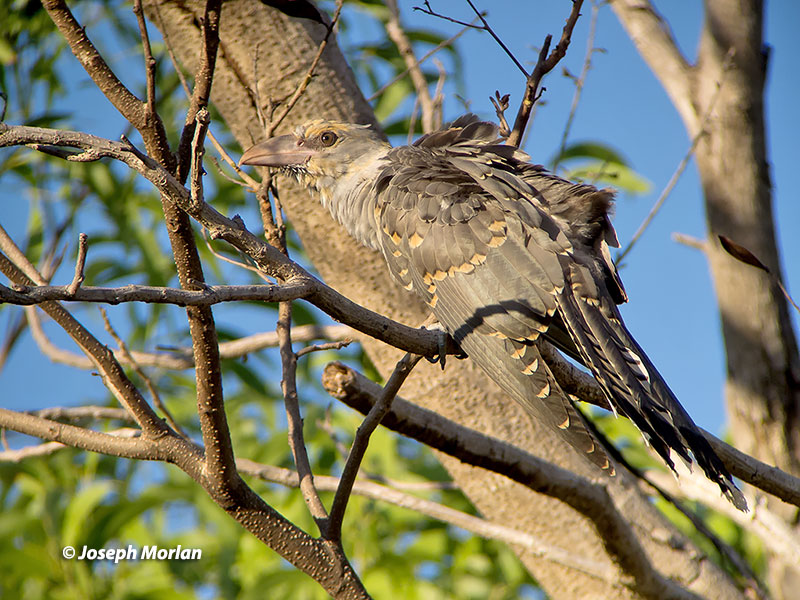

An early morning walk around the grounds of the Kakadu Lodge found a couple of very large noisy birds apparently mobbing a Torresian Crow (Corvus orru ceciliae). We assumed the crow was threatening the eggs or young of a pair of some species of breeding bird. But it soon became apparent that the large brown birds were not trying to chase away a marauding crow, but instead were begging from it for food. These were not a pair protecting their nest, but immature (juvenle molting into adult) Channel-billed Cuckoos begging from their foster parent victim.
This species is uncommon and local in NT. These were the only individuals we encountered. At about two feet in length, they are the largest cuckoo in the world and the largest brood parasite, laying their eggs in the nests of other birds who raise the young as if they were their own. They breed in Australia, mostly in March and April after which they migrate north across the Torres Strait to wintering grounds in New Guinea and Indonesia. They are normally absent from Australia May through July with adults arriving in August. HANZAB suggests that a few birds may remain in their breeding range and "a few stragglers remain till June and July, mainly in n. Qld." But why two molting juveniles were still present in Kakadu in early August is a bit of a mystery. Any explanation would be welcome. Channel-billed Cuckoo is the only member of the genus Scythrops. Three subspecies are often recognized (IOC, HBW, HANZAB), two described from Sulawesi and the Bismarck Archipelago in 1966, but Clements does not recognize them.
Digiscoped with Panasonic DMC-LZ5 | Nikon FieldScope III | 30XWA | hand-held (no adapter)